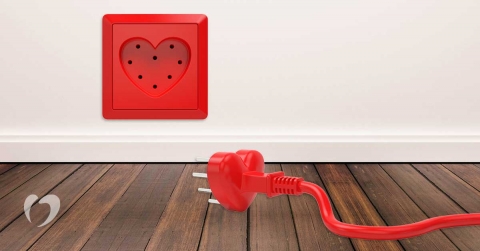Conduction Disorders: The Heart Health Problem You Don’t See

Your heart relies on electrical impulses to beat and stay in rhythm. When something blocks or impairs that signal, it falls into a general category of heart rhythm issues called conduction disorders. If the block is mild, it may not even be noticeable. But some conduction disorders can be severe.
How electrical signals work in the heart
Your heart sends its signals from the sinoatrial (SA) node, which acts as the natural pacemaker. When the SA node sends a signal, it’s supposed to travel from top to bottom and tell the chambers to pump in the correct order.
That doesn’t always happen.
When something is wrong with the electrical impulses in your heart, those chambers fire in the wrong order or can get out of sync with each other. This is the fundamental problem behind the most common conduction disorders.
Long QT syndrome
Long QT syndrome is one of the major conduction disorders that affects the heart. About 1 in 2,500 people in the United States has a form of Long QT syndrome.
This issue occurs when one of the ion channels in the heart is blocked and takes longer to recharge for the next heartbeat. There are many different types of Long QT syndrome depending on the channels affected, and medication and treatment will vary based on which channel is not working properly.
Many patients never have symptoms, whereas others may experience fainting or sudden cardiac arrest because of an irregular heartbeat. Genetic screening, echocardiograms, and Holter monitors may be used to detect possible long QT syndrome.
Treatment can range from use of prescription beta blockers to prevent irregular heart rhythms to placing an implantable cardioverter defibrillator (ICD) in the chest to regulate the heart rhythm and prevent death. There are also procedures that can block nerves in the heart.
Heart block
A heart block often comes from damage to the heart muscle but can also come from a birth defect. Most cases develop over time. A heart block keeps electrical signals from making their way to the proper places in the heart at the proper times.
Some well-trained athletes may have a first-degree heart block that slows down signals to the heart and causes an unnaturally slow resting heartbeat. This usually doesn’t require treatment.
Second- and third-degree heart blocks are more serious and are typically diagnosed through an EKG. More severe heart blocks may require treatment with a pacemaker.
Bundle branch block
Electrical signals typically travel down both the left and the right sides of the heart simultaneously. A bundle branch block can occur on the pathway on either side of the heart, and it’s usually caused by existing heart disease, such as heart attack, infection of the heart, high blood pressure, or blood clots. The most common treatment for bundle branch blocks is to treat the underlying heart disease.
Many patients with conduction disorders aren’t aware of the issue because they don’t experience regular symptoms. Routine checkups to proactively monitor your heart health can help identify these issues before they become a more serious problem. Contact Oklahoma Heart Hospital today to find out how we can help you.




